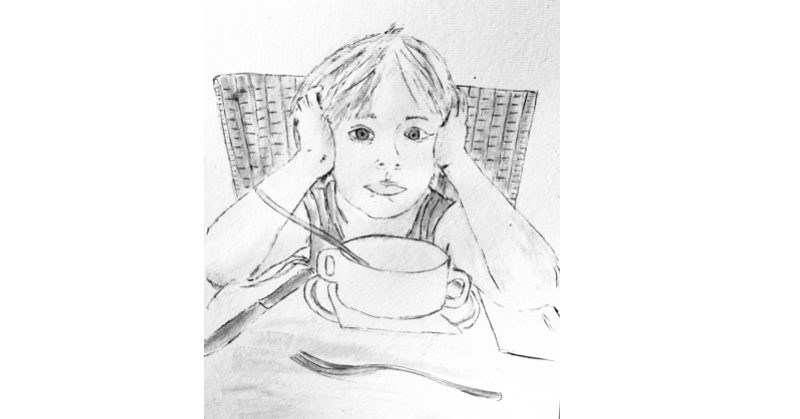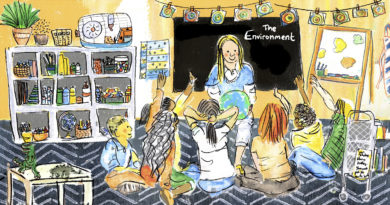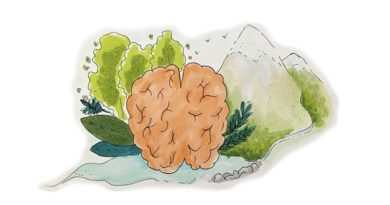Helping children with food sensitivities eat well
“Is the curry gluten and dairy free?” asked my friend. “No.” “What about the tomato soup?” “It has sour cream in it,” responded the waiter. “And the mushroom risotto?” “There is flour in the sauce and we can’t remove it as it is pre-made.”
The face of my friend’s 10-year-old son sank, as mostly everything that sounded edible to him contained something he couldn’t have because of his food intolerances. He was left with salads, and only after he flat-out refused yet another one that week, did the restaurant agree to pan-fry him a piece of fish, using oil instead of butter, with vegetables on the side.
For parents of children with food intolerances or food allergies*, this is a familiar story. Eating out can be difficult, but so can providing these children with an optimal diet at home. Since many foods that often need to be excluded from their diet are highly nutritious, children with food sensitivities – particularly those who need to avoid more than one type of food – tend to be at a greater risk of nutrient deficiencies, which can negatively affect their development.
The good news is that – through choosing the right alternatives and smart food combinations – even children with food sensitivities can get all essential nutrients from food.
Here are some excellent alternatives for three of the most common sources of food sensitivities: wheat/gluten, milk/lactose and eggs:
Wheat/gluten alternatives
Wheat and other gluten-containing grains such as barley and rye have become a staple in the Western diet, and for many children it is hard to imagine a day without pasta or bread. These grains also provide a good supply of B vitamins, magnesium, iron, zinc, protein and fibre. For children who need to avoid them due to wheat allergy, coeliac disease or gluten intolerance, it is important to replace them with other similar, nutritious foods. Good wheat and gluten-free alternatives include:
- Quinoa: Quinoa is a pseudo-grain that is high in protein, fibre, iron and magnesium, and it can be included pretty much in any meal of the day. Cook it as morning porridge with fruit, coconut milk and cinnamon, add it to homemade smoothies for a snack, or eat it as a side dish for lunch and dinner. Also, it is cooked in 10-15 minutes and can wait in the fridge for a few days if cooked in bulk – perfect for us busy parents!
- Buckwheat: This is another pseudo-grain with even more protein, fibre, magnesium and iron than quinoa. It has more of a nutty taste and can be cooked into morning porridge, added to soups or used as a side dish. If your children like risotto, you can use buckwheat groats instead of rice and make them a highly nutritious alternative to their favourite dish in 15-20 minutes.
- Amaranth: Amaranth can be used in similar ways to buckwheat and quinoa. Its seeds are smaller, though, and when cooked they are stickier and of a gelatinous texture, so they are great for bulking up soups or stews. Cooking time is 20-25 minutes.
- Millet: Often children’s favourite, due to its mild taste and soft texture, millet can be cooked as porridge in 10-15 minutes, used in salads or as a side dish. Unlike amaranth, quinoa and buckwheat, millet is not a source of complete protein, but still contains a good amount of minerals as well as B vitamins and fibre.
- Brown rice: While it takes longer to cook, brown rice is generally more nutritious than white rice, as it contains more fibre, magnesium, zinc and protein.
Milk/Lactose
Dairy is another common source of food sensitivities, and many children struggle with lactose intolerance or milk allergy. While those with lactose intolerance can sometimes tolerate goat’s milk, as it contains less lactose and is more easily digestible, most children with milk allergy have to avoid dairy altogether.
When this is the case, children below two years of age are typically recommended hypoallergenic formulas by their paediatricians, as these provide the nutrition they need without the allergens. For older children, plant-based milks such as almond, hemp, rice, flax, oat or coconut milk can be good alternatives for both direct use and cooking.
However, when choosing a plant-based milk, keep a few things in mind:
- Dairy is a good source of vitamin B12 and calcium (although the opinions about the latter among nutritionists vary). Plant-based milks, however, are naturally low in these nutrients, so choose a version that is fortified with calcium and vitamin B12 (as well as vitamin D, which supports calcium absorption).
In addition, make sure that your children’s diet includes a good amount of dark-green vegetables, nuts, beans, sardines with bones and salmon, as these are all high in calcium. Sardines and salmon are also good sources of vitamin B12, as are other animal products such as eggs or meat.
- Dairy is also an important source of protein, which is essential for children’s growth. Plant-based milks are generally low in this nutrient, and if your children cannot have dairy, make sure to include enough other high-protein foods in their diet, e.g., eggs, fish, meat, quinoa, buckwheat, beans, nuts, and chia seeds.
- Select unsweetened versions to minimise the added sugar in your children’s diet. Also, oat and rice milk contain much more naturally occurring sugar than hemp, coconut and almond milk, so limit the consumption of these two.
- Where possible, choose organic plant-based milk and always read the label to ensure that it does not contain potentially harmful additives like carrageenan.
Eggs
Eggs are a nutrient powerhouse, packed with protein, iron and vitamins A, B12 and E. If your children cannot eat eggs, you can replace these nutrients through high-protein grains mentioned above, fish, meat (protein, vitamin B12), dark green vegetables (iron, vitamins A and E), yellow and orange vegetables (vitamin A) and nuts, beans, pulses and chia and other seeds (vitamin E, iron).
To replace eggs in cooking and baking, use arrowroot or soaked chia seeds for binding purposes, or mashed bananas or apple sauce to add moisture.
Although food sensitivities are on the rise, avoiding problematic foods need not mean that we compromise our children’s nutrition, and with a bit of out-of-the-box thinking we can often provide them with all the nutrients they need from real food. However, it is also important to recognise that sometimes additional supplementation is necessary, and when that is the case, it is essential to consult a health or nutrition practitioner before choosing any supplements, to ensure that these suit your child’s needs and to avoid potential side effects.
* It is important to note that food allergy and food intolerance are two different conditions that should not be equated. In this article we refer to them together as “food sensitivities.”
By Klara Debeljak
Klara is the founder of Nourishi Consulting, a nutrition consultancy that specialises in family and children’s nutrition. To learn more visit www.nourishiconsulting.com or contact them directly at getintouch@nourishiconsulting.com. For nutrition tips, articles about healthy eating and simple and healthy recipes join their Facebook community “Nourishi – Family & Children nutrition”.
Illustration by Lemady Rochard
Lemady is an Artist and Illustrator who also runs Storycraft classes and parties for children at the mal_Raum art studio in Ruschlikon, ZH. She has a background in theatre arts and children’s literature. Lemady lives near Einsiedeln SZ with her family. Contact her: Storycraft.ch@outlook.com Facebook: www.facebook.com/lemadyart




